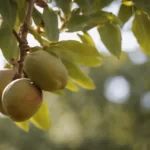A moisture meter is an invaluable tool for gardeners, providing crucial insights into the moisture content of soil. This helps in making informed watering decisions, ensuring optimal plant health. Moisture meters come in various forms, each suited to different gardening needs. Understanding how to use them effectively can greatly enhance your gardening practices.
Moisture Meter Types
There are primarily two types of moisture meters: pin-type and pinless. Pin-type meters measure moisture content by inserting probes into the soil, while pinless meters detect moisture at the soil’s surface. Pin-type meters offer direct, localized readings but can be invasive, whereas pinless meters provide a non-invasive approach but might be less precise in pinpointing specific areas. Choosing the right type depends on your gardening requirements and the sensitivity of your plants.
Preparing to Use the Moisture Meter
Before using a moisture meter, it’s important to identify the type best suited for your garden’s needs. For indoor potted plants, small pin-type meters are often sufficient. For larger garden areas, a pinless meter might be more practical. If your meter requires calibration, follow the manufacturer’s instructions to ensure accurate readings. Some meters come pre-calibrated, simplifying the setup process.
How to Use a Pin-Type Moisture Meter
To use a pin-type moisture meter, start by cleaning the pins to remove any debris that might skew the readings. Insert the pins into the soil near the base of the plant, being careful not to damage the roots. The depth of insertion should correspond to the root zone of the plant. Once inserted, the meter will give a reading, typically on a scale. The scale may vary between models, so refer to your meter’s manual for specific interpretation guidelines.
How to Use a Pinless Moisture Meter
Using a pinless moisture meter involves placing the device directly on the soil surface. Ensure the sensor area is clean and makes full contact with the soil. For larger areas, take multiple readings at different locations to get an accurate assessment of the moisture level throughout the garden. As with pin-type meters, reading scales can vary, so familiarizing yourself with your specific meter’s scale is important for accurate interpretation.
Interpreting Moisture Levels
Understanding the moisture readings is crucial for effective watering. Most meters use a numeric scale or a dry-to-wet spectrum. Low numbers usually indicate dry soil, which means your plants need watering. Higher numbers suggest moist or wet soil, signaling that no additional water is needed. It’s important to know the moisture preferences of your plants, as some plants thrive in dryer soil, while others require consistently moist conditions. Adjust your watering routine based on these readings to promote healthy plant growth.
Common Mistakes to Avoid
When using a moisture meter, there are several common mistakes to be aware of. Avoid testing in extremely dry or wet soil, as it can result in inaccurate readings. Also, don’t rely solely on surface readings, especially for larger plants; their root systems may require deeper moisture analysis. Regularly clean the probes or sensor area of the meter to prevent buildup, which can affect performance. Lastly, don’t forget to remove the meter from the soil after use to prevent corrosion or damage.
Maintenance and Care of Your Moisture Meter
Proper maintenance is key to ensuring the longevity and accuracy of your moisture meter. After each use, clean the probes or sensor area with a dry cloth to remove any soil or moisture. Store the meter in a dry, cool place to prevent damage from extreme temperatures or humidity. Check the batteries regularly and replace them as needed. If your meter seems to be giving inconsistent readings, recalibrate it if possible, or consult the manufacturer’s guidelines for troubleshooting.
Environmental Considerations
When using a moisture meter, it’s also important to consider the environmental benefits. By accurately gauging soil moisture, you can avoid overwatering, which not only conserves water but also prevents nutrient runoff and soil erosion. This mindful approach to watering contributes to a more sustainable garden, reducing the ecological footprint of your gardening activities.
Tips for Integrating Moisture Meters into Regular Gardening Practices
Integrating a moisture meter into your gardening routine can be seamless. Use it regularly to check the moisture levels of your plants, especially during extreme weather conditions like droughts or heavy rainfall. Incorporate moisture readings into your watering schedule, adjusting frequency and amount based on the meter’s feedback. By doing so, you can ensure that each plant receives the right amount of water, promoting healthier growth and reducing water waste.
Conclusion
A moisture meter is a simple yet powerful tool that offers significant benefits to gardeners. It provides precise information on soil moisture, enabling you to water your plants more effectively. This not only promotes plant health but also contributes to water conservation and a healthier environment. With the correct use and regular maintenance, a moisture meter can become an essential part of your gardening toolkit, helping you cultivate a lush, vibrant, and sustainable garden.



